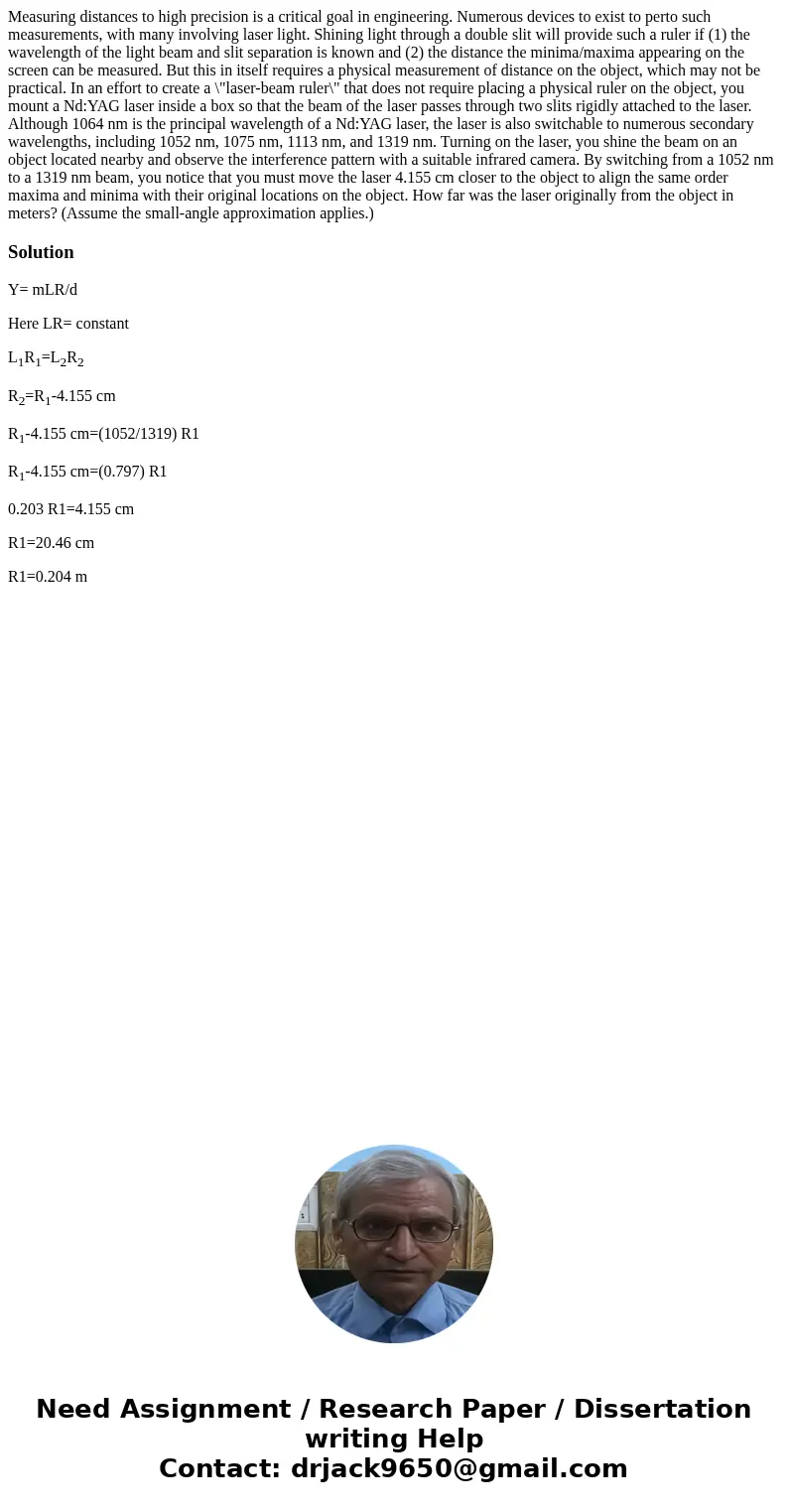Measuring distances to high precision is a critical goal in
Measuring distances to high precision is a critical goal in engineering. Numerous devices to exist to perto such measurements, with many involving laser light. Shining light through a double slit will provide such a ruler if (1) the wavelength of the light beam and slit separation is known and (2) the distance the minima/maxima appearing on the screen can be measured. But this in itself requires a physical measurement of distance on the object, which may not be practical. In an effort to create a \"laser-beam ruler\" that does not require placing a physical ruler on the object, you mount a Nd:YAG laser inside a box so that the beam of the laser passes through two slits rigidly attached to the laser. Although 1064 nm is the principal wavelength of a Nd:YAG laser, the laser is also switchable to numerous secondary wavelengths, including 1052 nm, 1075 nm, 1113 nm, and 1319 nm. Turning on the laser, you shine the beam on an object located nearby and observe the interference pattern with a suitable infrared camera. By switching from a 1052 nm to a 1319 nm beam, you notice that you must move the laser 4.155 cm closer to the object to align the same order maxima and minima with their original locations on the object. How far was the laser originally from the object in meters? (Assume the small-angle approximation applies.) 
Solution
Y= mLR/d
Here LR= constant
L1R1=L2R2
R2=R1-4.155 cm
R1-4.155 cm=(1052/1319) R1
R1-4.155 cm=(0.797) R1
0.203 R1=4.155 cm
R1=20.46 cm
R1=0.204 m

 Homework Sourse
Homework Sourse